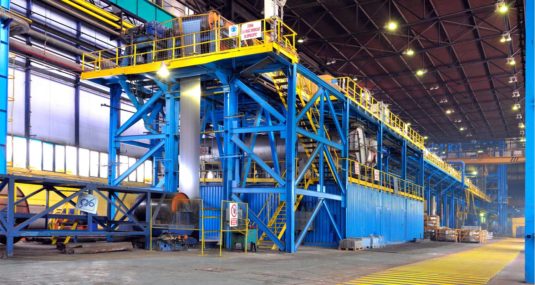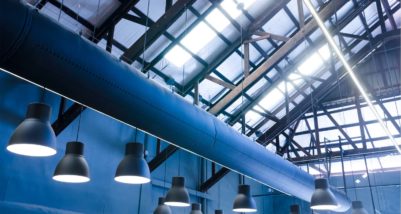5 reasons to convert warehouse lighting to LEDs
LED technology has been a game changer in lighting and has rapidly matured to provide solutions for nearly every environment – with warehouses a prime candidate for conversion.
Most people by now know that LED lighting is by far the most energy-efficient choice as well as having a very long working life – both excellent reasons in themselves for warehouse management to make the move.
It is also accepted now that LED light is as good as, or better than the conventional options like fluorescent or metal halide (HID). Beyond these great advantages, there are five reasons to convert warehouse lighting to LEDs.


1: Colour quality
This is sometimes overlooked but a very important element in the efficient operation of a busy warehouse because the colour quality of the light has a big impact on the effectiveness of the people who work there. For example, in areas where employees have to choose stock and read labels, the clarity of light is crucial.
Well manufactured LED fixtures ensure that the quality of light is better than traditional sources and the aim is to focus on the colour temperature range of between 4000k and 5000k, which generates a cool white that at the top end often produces a blue tint. This helps staff to avoid eyestrain while generally improving the working environment and productivity
In some cases, it’s an option to choose LED lighting with 3500k for a slightly warmer feel but this has to be balanced against visibility and safety. Quality LEDs fixtures also offer excellent colour rendering and a Colour Rendering Index (CRI) of at least 85 is easily achieved, with higher values available.
2: No warm-up time
Unlike warehouse lighting options such as HID that require lengthy warm-up times, LED is an instant and flexible. HID lamps can take up to 20 minutes to reach maximum illumination so they burn a lot of energy inefficiently. Fluorescent lighting options also take time to reach full effect and what’s more the quality of light deteriorates with extended use. LEDs are also robust and able to work optimally in a range of temperatures.


3: Cool solution
One of the big advantages of LEDs, compared with other options is the fact that they emit far less heat than HID or even fluorescent. Apart from being a safer alternative, the more efficient LED fixtures help to reduce operating costs by taking the strain off the air-conditioning, with up to 20% savings in energy used for cooling.
4: Control options
More flexibility and cost-savings are achieved by ensuring that LED installations include controls. Unlike HID, LEDs are more efficient when run at less than full power and an added advantage is that their lifespan also increases.
Smart controls help to deliver further savings through intelligent lighting that incorporates timers and motion devices, so the LEDs are only used when needed. By being responsive to conditions, and patterns of traffic in a warehouse, the smart LED lighting systems can deliver a further 30% in energy savings.
5: Robust switching
One more drawback of HID is the lack of facility to switch lights on and off as needed without causing problems. Turning off a metal halide lamp means having to wait for up to 20 minutes for full light when it’s turned back on again and so the effect is generally that people avoid switching these lamps off, so energy is wasted by keeping them running for far longer than needed, simply to avoid the problems caused by turning them off.
In contrast, LEDs are a very robust solution and can be switched on and off at will, manually or through smart controls, with instant full light provided every time and there is no loss of quality. The fixture’s working life is also unaffected by frequent switching.